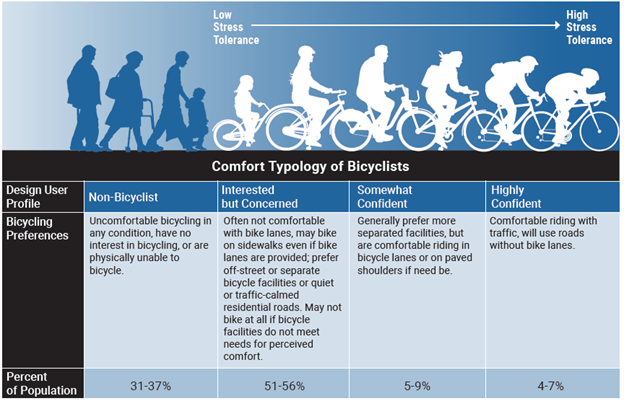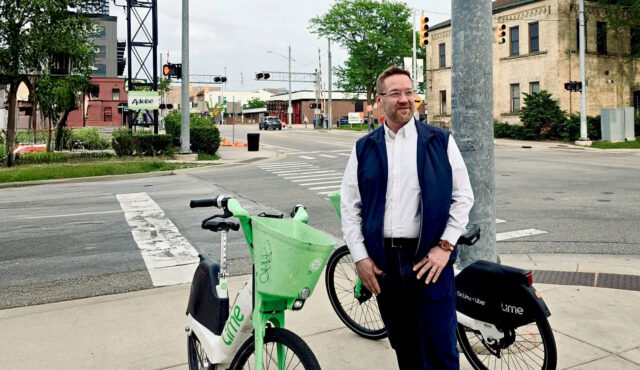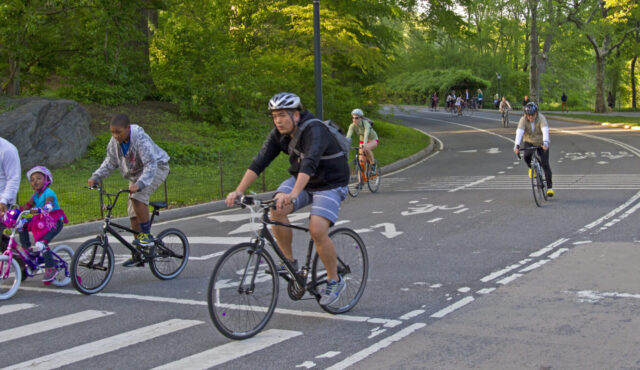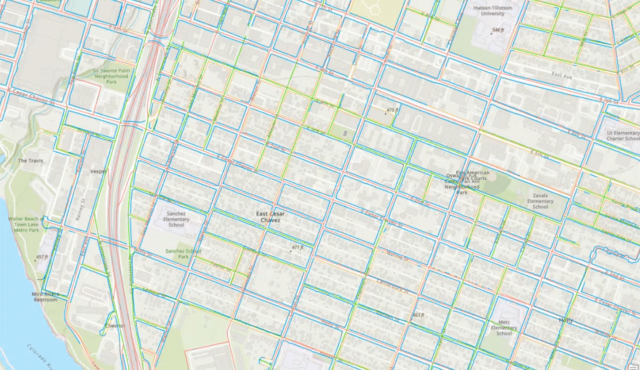While evaluating things like crash patterns, systemic safety, and network connectivity is critical to the work we do at Toole Design, the concept of comfort is increasingly important, because it speaks directly to the choices people make. And those choices are important. Encouraging more people to bike by making our streets more comfortable is key to creating a more sustainable and equitable transportation system.
The concept of the Four Types of Bicyclists, defined by Portland Bicycle Coordinator Roger Geller, has had a major influence on how cities plan and design places for people to bike. The Four Types provide a framework for understanding people’s comfort riding a bicycle in relation to levels of motor vehicle traffic.
The question is: How do we apply that understanding to our technical work and decision-making — and are we thinking holistically? Level of Traffic Stress (LTS) is a valuable and elegant tool for bike planning, focusing on traffic speed, volume, and roadway configuration. But this relative simplicity leaves out a variety of nuanced factors that illustrate a broader understanding of comfort.
The San Francisco Municipal Transportation Agency (SFMTA) understands the value of a more comprehensive view of comfort. Rather than relying solely on traffic and crash data to guide decisions, the SFMTA decided to take a more proactive and comfort-oriented approach to prioritizing bike network expansion through the agency’s Biking and Rolling Plan. To that end, we were excited to partner with the SFMTA to overhaul its Bicycle Comfort Index (BCI). Thanks to the agency’s wealth of data, we were able to dig deeper to identify and quantify additional factors that influence comfort on San Francisco’s streets — and then apply the revamped BCI as a central framework for planning.
Exploring what comfort means
Our review of the research on more than 50 variables that may impact bicycle comfort confirmed what every bicyclist already knows: that factors such as steep slopes, inclement weather, lack of street lighting, poor pavement, and perceptions of crime can discourage biking along some streets or at some times of day.
Research and numerous project-level surveys also show that people have strong preferences for different types of bicycle infrastructure and different types of routes. Most people would rather bike on a quiet neighborhood street than even a well-designed separated bike lane on a busy thoroughfare. Additionally, parking turnover has a significant impact on comfort. In San Francisco, we learned that people have a strong preference for concrete barrier-separated bike lanes and are less comfortable with parking-separated bike lanes.
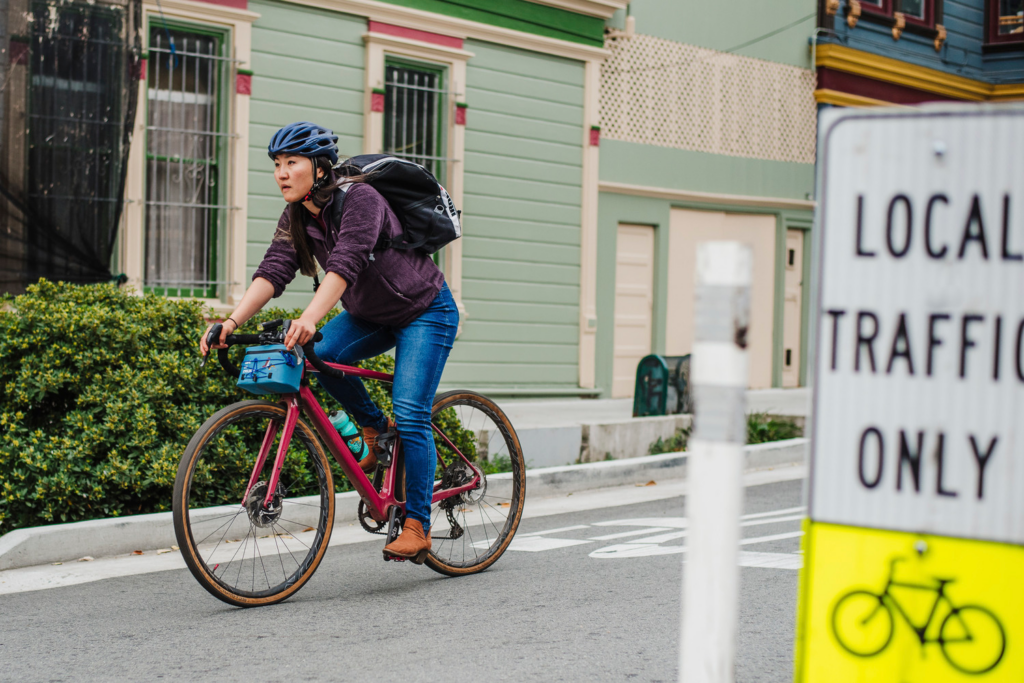
San francisco’s bicycle comfort index
Applying what we learned, Toole Design and the SFMTA developed a BCI that evaluates each segment of the street network based on a broader definition of comfort. The BCI incorporates LTS but takes it a step further to consider other factors that influence perceptions of comfort and safety, such as the type of vertical delineation along a bike lane, pavement quality, slope, debris in bike lanes, and surrounding land use conditions or commercial activity. These are aligned into three sub-scores: Context, Traffic, and Bicycle Infrastructure.
Using extensive community survey data, we calibrated the model to better reflect perception of comfort in San Francisco. The result is a measure of comfort that is more holistic than one based purely on LTS. It also distinguishes between the factors that the SFMTA can feasibly impact to improve comfort (such as street lighting or bike lane buffer) and factors that the SFMTA cannot influence (such as slope). The BCI is a powerful tool that the SFMTA can use to communicate with the community, identify and invest in physical infrastructure that will make the biggest difference, and measure performance over time.
San Francisco’s BCI exists thanks to the foresight and creativity of the SFMTA. It depends largely on the agency’s available data, and it was designed specifically for the context. While this BCI is specific to San Francisco, I look forward to applying what we learned in this process to projects across North America and continuing to broaden how we think about bike comfort in our communities.
